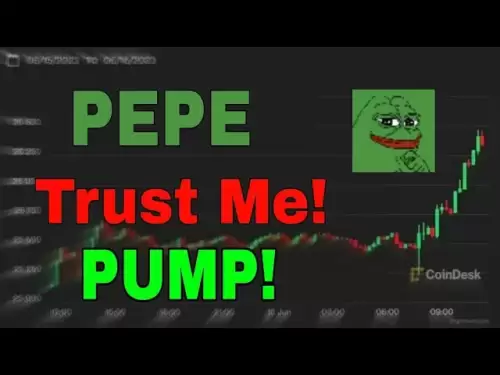-
 Bitcoin
Bitcoin $105,072.9173
-0.46% -
 Ethereum
Ethereum $2,624.9916
-0.45% -
 Tether USDt
Tether USDt $1.0005
0.00% -
 XRP
XRP $2.2087
-1.64% -
 BNB
BNB $667.4636
-0.26% -
 Solana
Solana $153.4648
-2.05% -
 USDC
USDC $0.9999
0.01% -
 Dogecoin
Dogecoin $0.1901
-2.99% -
 TRON
TRON $0.2735
1.88% -
 Cardano
Cardano $0.6782
-2.48% -
 Hyperliquid
Hyperliquid $35.4649
-2.31% -
 Sui
Sui $3.1889
-2.26% -
 Chainlink
Chainlink $13.8726
-3.51% -
 Avalanche
Avalanche $20.2543
-5.33% -
 Stellar
Stellar $0.2672
-2.62% -
 UNUS SED LEO
UNUS SED LEO $8.8766
-0.62% -
 Bitcoin Cash
Bitcoin Cash $403.7804
-0.30% -
 Toncoin
Toncoin $3.1985
-0.02% -
 Shiba Inu
Shiba Inu $0.0...01285
-2.08% -
 Hedera
Hedera $0.1683
-2.57% -
 Litecoin
Litecoin $88.2152
-2.65% -
 Polkadot
Polkadot $4.0484
-3.72% -
 Monero
Monero $317.1060
-8.36% -
 Ethena USDe
Ethena USDe $1.0013
-0.01% -
 Bitget Token
Bitget Token $4.7414
-1.70% -
 Dai
Dai $0.9998
-0.03% -
 Pepe
Pepe $0.0...01196
-3.84% -
 Pi
Pi $0.6489
-0.33% -
 Aave
Aave $265.7810
0.15% -
 Uniswap
Uniswap $6.3507
-5.73%
What does the divergence between KDJ and trading volume indicate? Is it a trend reversal signal?
The KDJ indicator's divergence from trading volume can signal potential trend reversals, but traders should use additional tools to confirm these signals.
May 31, 2025 at 10:56 pm
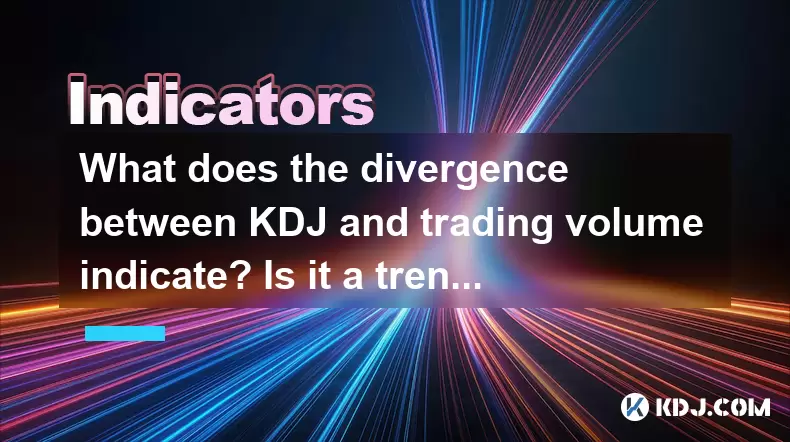
The divergence between the KDJ indicator and trading volume is a phenomenon that many traders in the cryptocurrency market pay close attention to. Understanding this divergence can provide crucial insights into potential market movements. In this article, we will delve into what this divergence indicates and whether it can be considered a signal for a trend reversal.
What is the KDJ Indicator?
The KDJ indicator is a technical analysis tool used to gauge the momentum of a cryptocurrency's price. It consists of three lines: the K line, the D line, and the J line. The K and D lines are used to identify overbought and oversold conditions, while the J line is used to confirm potential trend reversals. The KDJ indicator is particularly popular among traders because it can provide early signals of potential price changes.
What is Trading Volume?
Trading volume represents the total number of shares or contracts traded within a specified time frame. In the context of cryptocurrencies, it refers to the number of coins or tokens exchanged between buyers and sellers. High trading volume often indicates strong interest in a particular cryptocurrency, while low volume may suggest a lack of interest or uncertainty among traders.
What is Divergence?
Divergence occurs when the price of a cryptocurrency moves in the opposite direction of an indicator, such as the KDJ. There are two types of divergence: bullish divergence and bearish divergence. Bullish divergence happens when the price makes a lower low, but the indicator makes a higher low. Conversely, bearish divergence occurs when the price makes a higher high, but the indicator makes a lower high.
Divergence Between KDJ and Trading Volume
When the KDJ indicator diverges from trading volume, it can signal a potential shift in market dynamics. For instance, if the KDJ indicates that a cryptocurrency is overbought, but the trading volume remains low, it might suggest that the upward momentum is weakening. Conversely, if the KDJ shows an oversold condition, but the trading volume is high, it could indicate that the downward momentum is losing steam.
Is It a Trend Reversal Signal?
The divergence between the KDJ and trading volume can indeed be a signal of a potential trend reversal, but it is not a definitive indicator on its own. Traders should consider other factors and use additional technical analysis tools to confirm any signals. For example, if the KDJ shows a bullish divergence and the trading volume is increasing, it might suggest that a trend reversal from a downtrend to an uptrend is more likely. However, if the volume remains low, the divergence might be less reliable.
How to Identify Divergence Between KDJ and Trading Volume
Identifying divergence between the KDJ and trading volume requires careful observation and analysis. Here are the steps you can follow to identify this divergence:
- Plot the KDJ Indicator: Use a charting platform to plot the KDJ indicator on the price chart of the cryptocurrency you are analyzing.
- Observe the Price Movement: Look for significant highs and lows in the price movement.
- Compare with KDJ: Check if the KDJ indicator is making higher highs or lower lows compared to the price movement.
- Analyze Trading Volume: Plot the trading volume on the same chart and observe if it aligns with the price movement and the KDJ indicator.
- Identify Divergence: If the KDJ indicator and trading volume move in opposite directions to the price, you have identified a divergence.
Examples of Divergence in Action
To better understand how the divergence between KDJ and trading volume works, let's look at a few examples:
- Example 1: Bullish Divergence with Low Volume: Suppose Bitcoin's price makes a lower low, but the KDJ indicator makes a higher low. If the trading volume during this period is low, it might suggest that the bearish momentum is weakening, but the lack of volume could indicate that a trend reversal is not imminent.
- Example 2: Bearish Divergence with High Volume: Imagine Ethereum's price makes a higher high, but the KDJ indicator makes a lower high. If the trading volume during this period is high, it could signal that the bullish momentum is fading, and a trend reversal to a downtrend might be more likely.
Practical Application in Trading
Using the divergence between KDJ and trading volume in trading requires a strategic approach. Here are some practical tips for incorporating this analysis into your trading strategy:
- Confirm with Other Indicators: Use other technical indicators, such as the Relative Strength Index (RSI) or Moving Averages, to confirm the signals provided by the KDJ and trading volume divergence.
- Set Clear Entry and Exit Points: Based on the divergence signals, set clear entry and exit points for your trades. For example, if you identify a bullish divergence with increasing volume, you might set an entry point near the recent low and an exit point near a resistance level.
- Manage Risk: Always use stop-loss orders to manage your risk. If the divergence signal does not play out as expected, a stop-loss can help minimize your losses.
- Monitor Market Conditions: Keep an eye on overall market conditions and news events that could impact the cryptocurrency you are trading. External factors can influence the effectiveness of technical analysis signals.
Common Mistakes to Avoid
While the divergence between KDJ and trading volume can be a powerful tool, there are common mistakes that traders should avoid:
- Overreliance on a Single Indicator: Relying solely on the divergence between KDJ and trading volume without considering other indicators can lead to false signals and poor trading decisions.
- Ignoring Volume Trends: Failing to pay attention to volume trends can result in misinterpreting the strength of a divergence signal. Volume provides critical context for understanding market momentum.
- Not Using Stop-Loss Orders: Neglecting to use stop-loss orders can lead to significant losses if the market moves against your position.
- Ignoring Market Context: Not considering the broader market context and external factors can lead to misjudging the reliability of divergence signals.
Frequently Asked Questions
Q: Can the KDJ indicator be used effectively without considering trading volume?
A: While the KDJ indicator can provide valuable insights on its own, incorporating trading volume enhances its effectiveness. Volume provides context for the strength of the KDJ signals and can help confirm or refute potential trend reversals.
Q: How often should I check for divergence between KDJ and trading volume?
A: The frequency of checking for divergence depends on your trading style. For day traders, checking every few hours or even more frequently might be necessary. For swing traders, daily or even weekly checks might suffice.
Q: Are there specific cryptocurrencies where KDJ and trading volume divergence is more reliable?
A: The reliability of KDJ and trading volume divergence can vary across different cryptocurrencies. Generally, more liquid and widely traded cryptocurrencies like Bitcoin and Ethereum tend to provide more reliable signals due to higher trading volumes and more consistent price movements.
Q: Can divergence signals be used for long-term investment decisions?
A: Divergence signals are typically more suited for short to medium-term trading rather than long-term investment decisions. For long-term investments, fundamental analysis and broader market trends should be considered alongside technical indicators.
Disclaimer:info@kdj.com
The information provided is not trading advice. kdj.com does not assume any responsibility for any investments made based on the information provided in this article. Cryptocurrencies are highly volatile and it is highly recommended that you invest with caution after thorough research!
If you believe that the content used on this website infringes your copyright, please contact us immediately (info@kdj.com) and we will delete it promptly.
- Coinbase (NASDAQ: COIN) Joins the S&P 500 Index on May 19, 2025, Shares Jump 10%
- 2025-06-05 13:10:12
- Bitcoin (BTC) Price Surges Past $103,000 as Spot Market Reserves Continue to Drain
- 2025-06-05 13:10:12
- Animoca Brands, a Web3 investment company, is planning an IPO in New York
- 2025-06-05 13:05:12
- RWA Market Is Holding Steady Despite Some Pullbacks. Here Are 4 Promising Projects to Watch
- 2025-06-05 13:05:12
- Bitcoin (BTC) halving event has now been slightly more than a year in the rearview mirror
- 2025-06-05 13:00:13
- Coinbase (Nasdaq: COIN) Joins the S&P 500 Index on 19 May 2025
- 2025-06-05 13:00:13
Related knowledge
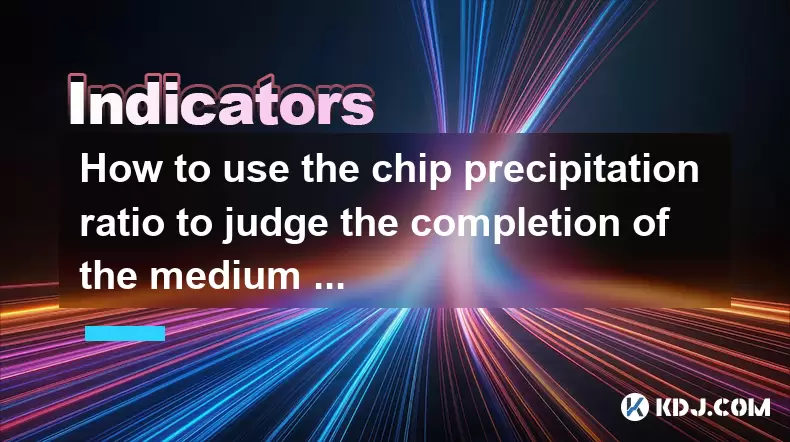
How to use the chip precipitation ratio to judge the completion of the medium and long-term bottom construction?
Jun 04,2025 at 03:36am
The chip precipitation ratio is a crucial metric used by investors to assess the accumulation of chips (or shares) at different price levels over time. This ratio helps in understanding the distribution of chips and can be a powerful tool for determining the completion of medium and long-term bottom construction in the cryptocurrency market. By analyzin...
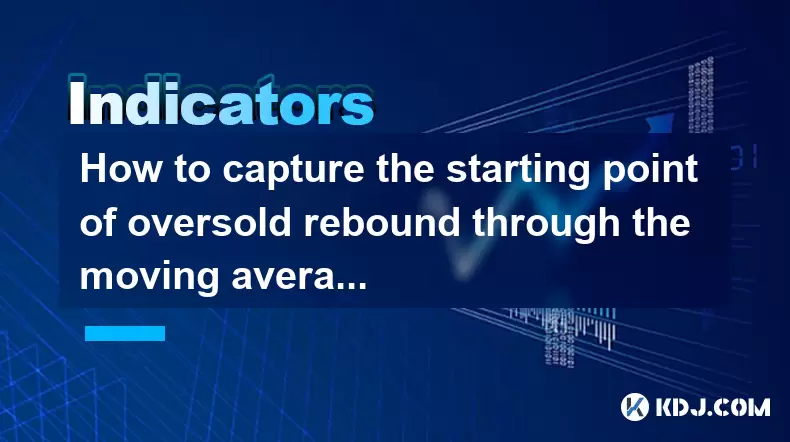
How to capture the starting point of oversold rebound through the moving average gravity reversal strategy?
Jun 04,2025 at 01:01pm
The moving average gravity reversal strategy is a sophisticated approach used by traders to identify potential entry points for buying cryptocurrencies when they are considered oversold. This strategy leverages the concept of moving averages to pinpoint moments when a cryptocurrency might be poised for a rebound. In this article, we will delve into the ...
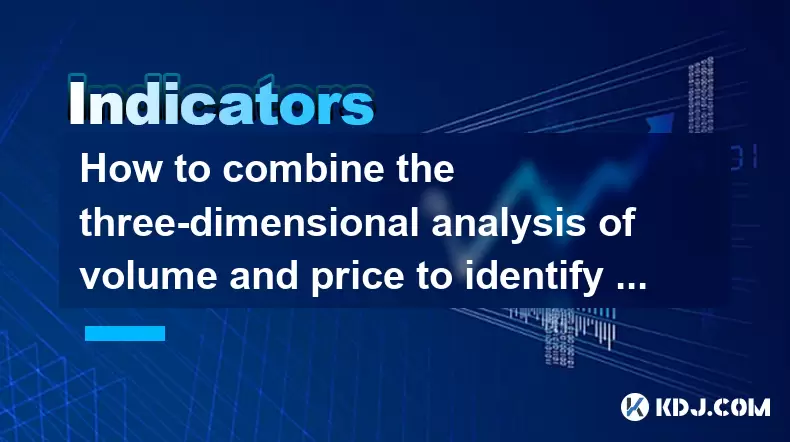
How to combine the three-dimensional analysis of volume and price to identify the golden buying point of breakthrough and retracement?
Jun 03,2025 at 11:42pm
In the dynamic world of cryptocurrencies, identifying the optimal buying points is crucial for maximizing profits and minimizing risks. One effective method to achieve this is by combining three-dimensional analysis of volume and price to pinpoint the golden buying points during breakouts and retracements. This article will delve into how to use this ap...
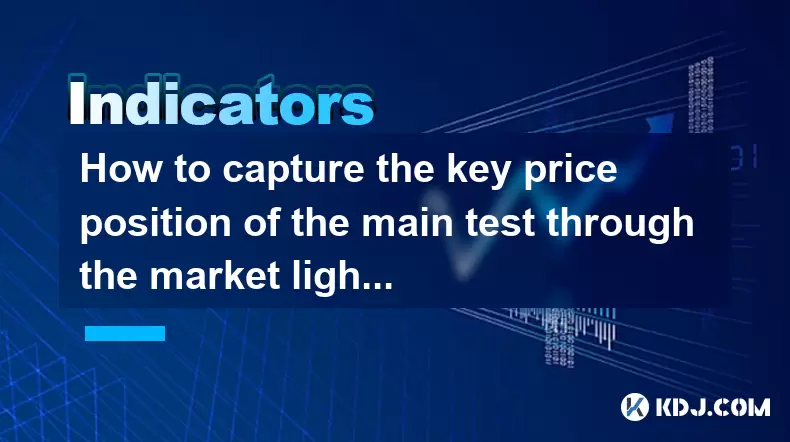
How to capture the key price position of the main test through the market lightning chart?
Jun 02,2025 at 06:07pm
Introduction to Market Lightning ChartThe market lightning chart is a powerful tool used by cryptocurrency traders to visualize price movements and identify key price positions. This chart type provides a detailed view of market activity, allowing traders to spot trends, reversals, and other significant price levels quickly. By understanding how to use ...
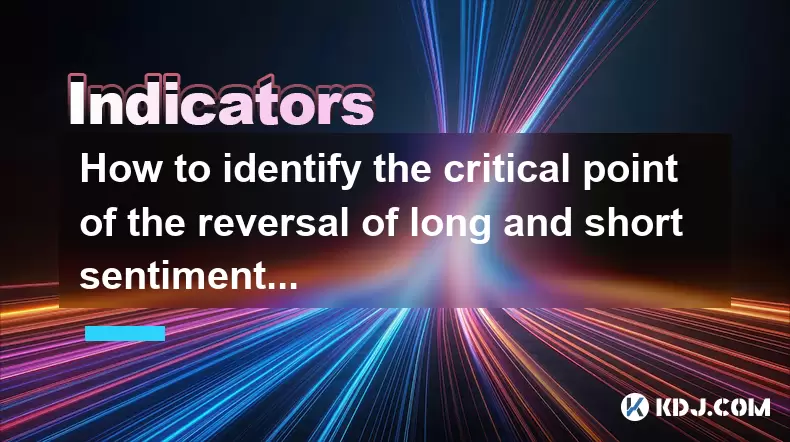
How to identify the critical point of the reversal of long and short sentiment through the K-line reverse package combination?
Jun 01,2025 at 03:36pm
In the world of cryptocurrency trading, understanding the sentiment of the market is crucial for making informed decisions. One effective method to gauge the potential reversal of long and short sentiment is through the analysis of K-line reverse package combinations. This technique involves studying specific patterns and formations within the K-line ch...
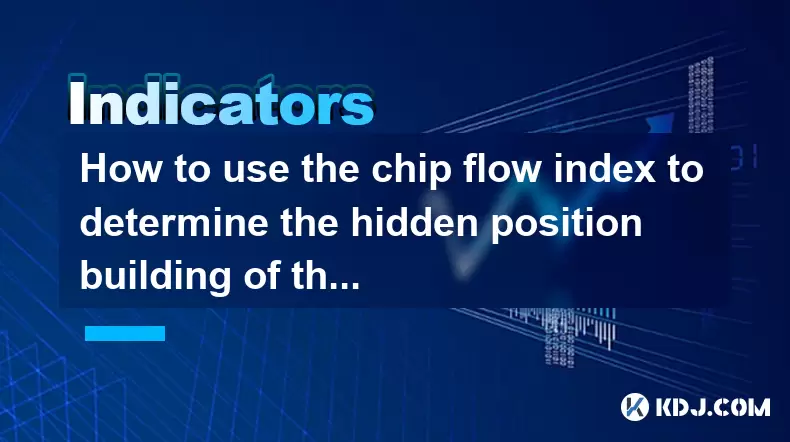
How to use the chip flow index to determine the hidden position building of the main funds?
Jun 01,2025 at 06:57pm
The Chip Flow Index (CFI), often referred to as the Volume Weighted Average Price (VWAP), is a crucial tool used by traders and investors to analyze the behavior of major funds in the cryptocurrency market. Understanding how to use the CFI can provide insights into the hidden position building of these main funds, which is essential for making informed ...

How to use the chip precipitation ratio to judge the completion of the medium and long-term bottom construction?
Jun 04,2025 at 03:36am
The chip precipitation ratio is a crucial metric used by investors to assess the accumulation of chips (or shares) at different price levels over time. This ratio helps in understanding the distribution of chips and can be a powerful tool for determining the completion of medium and long-term bottom construction in the cryptocurrency market. By analyzin...

How to capture the starting point of oversold rebound through the moving average gravity reversal strategy?
Jun 04,2025 at 01:01pm
The moving average gravity reversal strategy is a sophisticated approach used by traders to identify potential entry points for buying cryptocurrencies when they are considered oversold. This strategy leverages the concept of moving averages to pinpoint moments when a cryptocurrency might be poised for a rebound. In this article, we will delve into the ...

How to combine the three-dimensional analysis of volume and price to identify the golden buying point of breakthrough and retracement?
Jun 03,2025 at 11:42pm
In the dynamic world of cryptocurrencies, identifying the optimal buying points is crucial for maximizing profits and minimizing risks. One effective method to achieve this is by combining three-dimensional analysis of volume and price to pinpoint the golden buying points during breakouts and retracements. This article will delve into how to use this ap...

How to capture the key price position of the main test through the market lightning chart?
Jun 02,2025 at 06:07pm
Introduction to Market Lightning ChartThe market lightning chart is a powerful tool used by cryptocurrency traders to visualize price movements and identify key price positions. This chart type provides a detailed view of market activity, allowing traders to spot trends, reversals, and other significant price levels quickly. By understanding how to use ...

How to identify the critical point of the reversal of long and short sentiment through the K-line reverse package combination?
Jun 01,2025 at 03:36pm
In the world of cryptocurrency trading, understanding the sentiment of the market is crucial for making informed decisions. One effective method to gauge the potential reversal of long and short sentiment is through the analysis of K-line reverse package combinations. This technique involves studying specific patterns and formations within the K-line ch...

How to use the chip flow index to determine the hidden position building of the main funds?
Jun 01,2025 at 06:57pm
The Chip Flow Index (CFI), often referred to as the Volume Weighted Average Price (VWAP), is a crucial tool used by traders and investors to analyze the behavior of major funds in the cryptocurrency market. Understanding how to use the CFI can provide insights into the hidden position building of these main funds, which is essential for making informed ...
See all articles
























